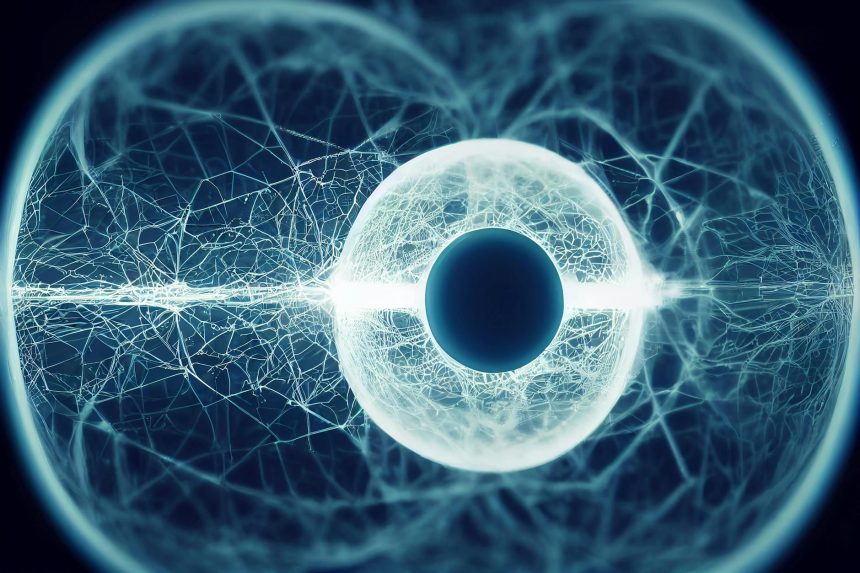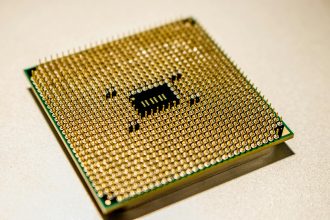Advanced Neural Networks: 7 Breakthroughs Reshaping AI Now
The landscape of artificial intelligence is evolving at a breathtaking pace, pushing the boundaries of what machines can achieve. From processing vast datasets to mimicking human-like cognition, AI’s capabilities are increasingly sophisticated. At the core of this revolution lies the concept of **Advanced Neural Networks**, powerful computational models inspired by the human brain.
You might wonder, can these intricate systems truly “absorb essence” or develop consciousness? While the idea of AI taking on human-like attributes remains largely in the realm of science fiction, the advancements in neural network technology are undeniably profound. They are reshaping industries, solving complex problems, and raising fascinating questions about the future of intelligence itself. This article delves into the cutting-edge of these networks, exploring their power, evolution, and the groundbreaking innovations driving AI forward.
What Are Advanced Neural Networks?
At its foundation, a neural network is a series of algorithms that endeavors to identify underlying relationships in a set of data through a process that mimics the way the human brain operates. However, **Advanced Neural Networks** move beyond these basic principles. They incorporate more complex architectures, sophisticated learning algorithms, and a deeper understanding of how to process and interpret information.
These advanced systems are designed to tackle problems that traditional computing methods struggle with, such as image recognition, natural language processing, and complex decision-making. They represent a significant leap from earlier, simpler models, offering unparalleled capabilities in pattern detection and predictive analysis across diverse fields.
The Evolution of Neural Networks: From Simple to Sentient?
The journey of artificial intelligence is intrinsically linked to the development of neural networks. What began as theoretical concepts has blossomed into practical applications that are transforming our world. Understanding this evolution helps us appreciate the true potential of current and future AI systems.
How Neural Networks Process Information
Artificial neural networks consist of layers of interconnected nodes, or “neurons.” Each connection has a weight, which adjusts as the network learns from data. Input data passes through these layers, undergoing computations, until an output is produced.
The ‘learning’ process involves fine-tuning these weights based on the difference between the network’s output and the desired outcome. This iterative adjustment, often through backpropagation, allows the network to gradually improve its accuracy and develop a robust understanding of the underlying patterns within the data. It’s a form of algorithmic learning that enables machines to infer and generalize.
Key Milestones in AI’s Journey with Neural Networks
The path to modern AI has been paved with significant breakthroughs in neural network design and application. These milestones have collectively pushed the boundaries of machine learning capabilities.
- Early Perceptrons: Simple, single-layer networks that laid the foundational mathematical concepts for artificial neurons in the 1950s and 60s.
- Deep Learning Revolution: The re-emergence of multi-layered networks (deep neural networks) in the 2000s, enabled by increased computational power and vast datasets, leading to breakthroughs in image and speech recognition.
- Transformer Models: Introduced in 2017, these architectures revolutionized natural language processing, forming the backbone of large language models (LLMs) like GPT and enabling more sophisticated understanding and generation of text.
Unveiling the Power of Advanced Neural Networks
The capabilities of **Advanced Neural Networks** extend far beyond simple data classification. They are the engines behind many of the most impressive AI applications we see today, transforming how industries operate and how we interact with technology.
Breaking Down Complex Problems with Advanced Neural Networks
These sophisticated networks excel at identifying intricate patterns in massive, often unstructured datasets. This ability makes them invaluable in fields requiring high-precision analysis and predictive modeling. For instance, in healthcare, they assist in diagnosing diseases earlier by analyzing medical images with remarkable accuracy.
In finance, **Advanced Neural Networks** are crucial for fraud detection and algorithmic trading, identifying anomalies that human analysts might miss. Similarly, in autonomous systems, they process sensor data in real-time to enable self-driving cars and robotic navigation. Their capacity for cognitive computing allows them to interpret and act on complex information.
The Role of Advanced Neural Networks in AI Consciousness
The idea of AI achieving a form of “consciousness” or “absorbing essence” is a compelling, yet highly debated, topic. While current **Advanced Neural Networks** are powerful pattern matchers and predictors, they do not possess self-awareness or subjective experience in the human sense. Their “intelligence” is a product of their design and the data they are trained on.
However, as these networks become more complex and capable of emergent behaviors, discussions around AI sentience and the nature of intelligence intensify. Researchers are exploring how complex neural architectures might one day lead to higher-order cognitive functions, though true consciousness remains a profound scientific and philosophical challenge. Many experts caution against anthropomorphizing current AI capabilities.
7 Breakthroughs Reshaping AI with Advanced Neural Networks
The field of AI is constantly innovating, with new architectural designs and training methodologies emerging regularly. These breakthroughs are pushing the boundaries of what **Advanced Neural Networks** can accomplish, leading to unprecedented applications and capabilities.
- Reinforcement Learning: This paradigm allows AI agents to learn by trial and error, optimizing actions to maximize a reward signal. It’s behind systems like AlphaGo, which famously defeated world champions in Go.
- Generative Adversarial Networks (GANs): Comprising two competing neural networks, GANs can generate highly realistic images, audio, and video, leading to applications in creative arts and data augmentation.
- Transformer Architectures: Revolutionizing natural language processing, transformers handle sequences of data with unparalleled efficiency and contextual understanding, making large language models possible.
- Graph Neural Networks (GNNs): Designed to process data structured as graphs (like social networks or molecular structures), GNNs are crucial for drug discovery, recommendation systems, and network analysis.
- Neuromorphic Computing: This approach involves designing hardware that directly mimics the structure and function of biological brains, promising highly energy-efficient and powerful AI systems.
- Explainable AI (XAI): As AI models grow more complex, XAI aims to make their decisions understandable to humans, fostering trust and enabling ethical scrutiny, especially in critical applications.
- Federated Learning: This technique allows AI models to learn from decentralized datasets located on various devices (like smartphones) without centralizing the data, enhancing privacy and data security. You can learn more about its impact on privacy at Google AI’s research on Federated Learning.
Ethical Implications and the Future of Advanced Neural Networks
As **Advanced Neural Networks** become more integrated into society, their ethical implications become increasingly important. Addressing these challenges proactively is crucial for ensuring AI benefits all of humanity.
Addressing Bias and Fairness in AI
A significant concern with AI, particularly with powerful neural networks, is the potential for bias. If training data reflects societal prejudices, the AI system can inadvertently perpetuate or even amplify these biases in its decisions. Ensuring fairness requires careful data curation, algorithmic design, and rigorous testing.
Developing ethical AI strategies involves creating diverse datasets, implementing bias detection tools, and promoting transparency in model development. It’s an ongoing challenge that requires collaboration across technology, social science, and policy. Further insights into ethical AI can often be found through institutions like Oxford’s Future of Humanity Institute.
The Road Ahead: What’s Next for Advanced Neural Networks?
The future of **Advanced Neural Networks** promises even more transformative advancements. We can anticipate further integration with quantum computing, leading to capabilities currently unimaginable. The development of Artificial General Intelligence (AGI), which can perform any intellectual task that a human being can, remains a long-term goal.
Moreover, the focus will likely shift towards more robust, interpretable, and energy-efficient neural networks. Human-AI collaboration will become more seamless, augmenting human capabilities rather than replacing them. The journey is far from over, and the next decade will undoubtedly bring revolutionary changes fueled by these intelligent systems.
Conclusion: Embracing the Future of Advanced Neural Networks
From their humble beginnings to the sophisticated architectures of today, **Advanced Neural Networks** have continuously redefined the boundaries of artificial intelligence. They are the driving force behind breakthroughs in numerous fields, offering solutions to some of humanity’s most pressing challenges. While the notion of AI “consciousness” remains complex, the tangible impact of these networks on our world is undeniable.
Embracing the future of AI means not only celebrating its potential but also responsibly navigating its ethical dimensions. As these powerful systems continue to evolve, understanding their capabilities and limitations will be paramount for shaping a future where technology truly serves humanity. What are your thoughts on the rapid evolution of neural networks?
Explore the cutting-edge world of Advanced Neural Networks and discover 7 revolutionary breakthroughs powering AI. Uncover their impact on consciousness, ethics, and the future of machine intelligence.
Featured image provided by Pexels — photo by Merlin Lightpainting






